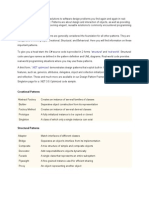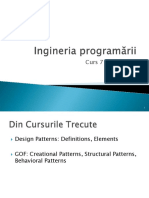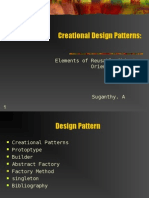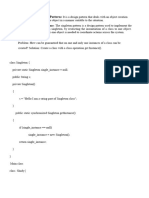0% found this document useful (0 votes)
29 views8 pagesComplete CSharp Design Patterns
The document outlines six design patterns in C#: Singleton, Factory Method, Abstract Factory, Adapter, Observer, and Strategy. Each pattern includes its intent, use cases, code examples, pros, and cons, along with a comparison table summarizing their types and purposes. These patterns are essential for creating flexible and maintainable software architectures.
Uploaded by
akshayCopyright
© © All Rights Reserved
We take content rights seriously. If you suspect this is your content, claim it here.
Available Formats
Download as PDF, TXT or read online on Scribd
0% found this document useful (0 votes)
29 views8 pagesComplete CSharp Design Patterns
The document outlines six design patterns in C#: Singleton, Factory Method, Abstract Factory, Adapter, Observer, and Strategy. Each pattern includes its intent, use cases, code examples, pros, and cons, along with a comparison table summarizing their types and purposes. These patterns are essential for creating flexible and maintainable software architectures.
Uploaded by
akshayCopyright
© © All Rights Reserved
We take content rights seriously. If you suspect this is your content, claim it here.
Available Formats
Download as PDF, TXT or read online on Scribd
/ 8




























































































